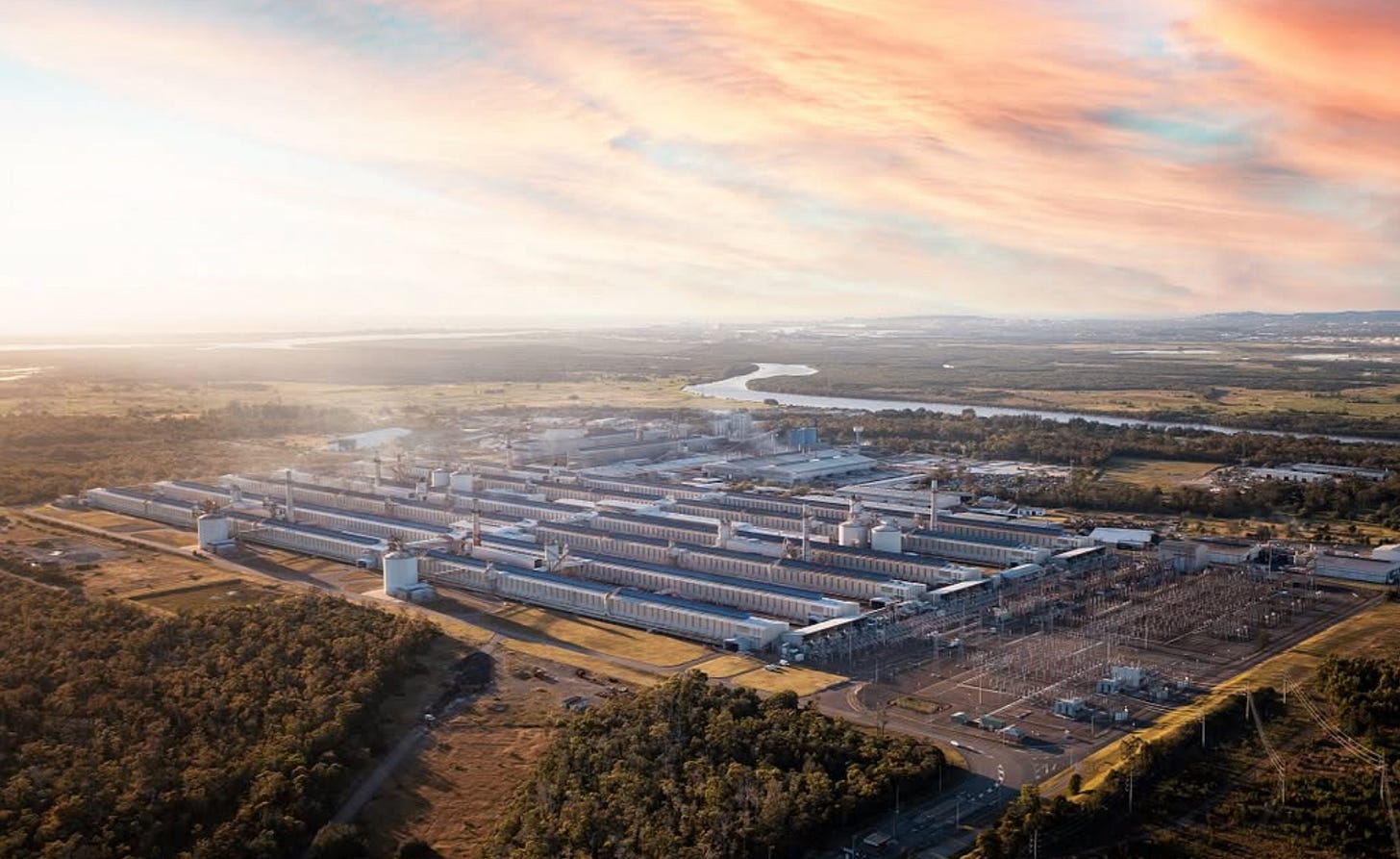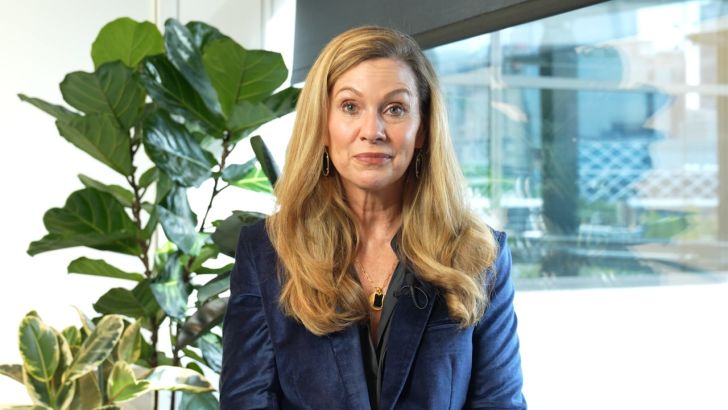Australia’s Largest Aluminium Smelter Faces Closure as Energy Crisis Threatens 1,000+ Jobs
This piece is freely available to read. Become a paid subscriber today and help keep Mencari News financially afloat so that we can continue to pay our writers for their insight and expertise.
Today’s Article is brought to you by Empower your podcasting vision with a suite of creative solutions at your fingertips.
Australia’s largest aluminium smelter issued a stark warning Tuesday that it may be forced to shut down by 2028, unable to identify a viable pathway forward amid crippling energy costs that have left the facility’s future in jeopardy and sparked urgent government intervention to save more than 1,000 jobs in New South Wales’ industrial heartland.
The Tomago aluminium facility in the Hunter region of New South Wales announced it is struggling with energy costs and has not secured a pathway to support operations beyond 2028, according to statements confirmed during parliamentary proceedings Tuesday afternoon.
Truth matters. Quality journalism costs.
Your subscription to Mencari directly funds the investigative reporting our democracy needs. For less than a coffee per week, you enable our journalists to uncover stories that powerful interests would rather keep hidden. There is no corporate influence involved. No compromises. Just honest journalism when we need it most.
Not ready to be paid subscribe, but appreciate the newsletter ? Grab us a beer or snag the exclusive ad spot at the top of next week's newsletter.
Defence Industry Minister Pat Conroy, whose Charlton electorate encompasses the region, told the House of Representatives during question time that the government is prepared to consider all options to keep the historic smelter operational.
“The Hunter has been very good to Rio for decades and it’s time for Rio to do the right thing by the Hunter,” Conroy stated. “We’ve made it very clear to Rio Tinto and the New South Wales Government that we’re here to support the facility if we have constructive partners.”
Conroy emphasized the urgency of the situation, declaring: “We continue to be in discussions with Rio and the State Government on options for Tomago. Nothing is off the table. Let me repeat that, Speaker. Nothing is off the table.”
Government Negotiations Stalled
Industry and Science Minister Tim Ayres confirmed in an interview with ABC’s Afternoon Briefing that the federal government and New South Wales had made a joint offer to Rio Tinto to support the facility, but that offer was rejected by the mining giant.
“We have been engaged in a very disciplined way with the owners of this facility and with the trade unions and with the state government,” Ayres said, revealing parallel negotiations over similar facilities in Queensland and Tasmania.
When pressed on whether energy cost subsidies or floor pricing mechanisms were under consideration, Ayres declined to provide specifics, citing commercial sensitivities. “We are engaged in every discussion,” Ayres stated. “We will examine every opportunity.”
The minister noted that one proposal from industry involves the government stepping in between the company and renewable energy developers to use its balance sheet to broker an energy solution. “We will look at every option, but the future is uncertain,” Ayres acknowledged. “I really want to underscore this. There is not a guaranteed outcome here by any stretch of the imagination.”
Historic Facility at Risk
The Tomago smelter, which has operated since 1984, represents a significant component of Australia’s aluminium sector and employs hundreds of workers directly, with broader regional employment impacts. The facility’s potential closure would mark a devastating blow to the Hunter region’s industrial base.
Ayres drew comparisons to ongoing negotiations over Queensland’s Boyne Island facility near Gladstone and Rio Tinto’s Bell Bay operation in Tasmania, noting different approaches in each state. In Queensland, he pointed to more positive developments where Rio Tinto is investing in renewable energy infrastructure.
“In Queensland, Rio Tinto is there investing in new green energy, underwriting new green energy projects, wind projects and solar projects, contributing to the grid,” Ayres explained. The federal government’s $2 billion green aluminium production credit is supporting that Queensland facility’s transition.
“As has been reflected in today’s announcement by the owners at Tomago, the future there is much less certain,” Ayres said.
Complex Market Pressures
Beyond energy costs, the minister outlined multiple challenges facing Australia’s aluminium sector that complicate rescue efforts.
“This is a very uncertain environment for the aluminium sector,” Ayres stated. “Of course, the companies pointed to the energy questions, not being able to secure energy contracts at the prices that they need, either in coal-fired power or in new energy.”
Ayres emphasized that global market conditions, including overcapacity and market subsidization in other economies, are creating oversupply and downward pressure on aluminium prices. U.S. tariffs have added further unpredictability to the trading environment.
“The viability of these facilities is not just about the price of inputs, it’s about the expected market price of aluminium on the global market,” he explained. “And these are ageing pieces of infrastructure that require constant investment.”
The minister expressed concern about underinvestment in maintenance and upgrades at some facilities. “One of the things that troubles me about some of these facilities is some of that investment, not because people are doing the wrong thing, but because they haven’t had the confidence to invest, some of the investment that should have occurred hasn’t occurred.”
Government Threshold Remains Unclear
When questioned about whether there exists a financial threshold beyond which the government would not support the facility, Ayres declined to specify limits.
“Of course, there are things that we can do and things that we can’t do, but I’m emphasizing cooperation, landing on the one page,” Ayres responded. “It is only possible to secure the right outcome if everybody lands in the right place.”
The minister stressed the need for all parties—federal government, state government, and Rio Tinto—to reach agreement on a commercially viable future for the facility. He acknowledged that success requires exploring “all of the opportunities for a common approach with a commercially viable future.”
Regional Economic Impact
The potential closure threatens significant regional employment and raises questions about Australia’s domestic aluminium production capacity. The facility has been a cornerstone of the Hunter region’s economy for more than four decades.
Government officials have been coordinating with trade unions representing workers at the facility, though specific workforce numbers were not disclosed in Tuesday’s statements.
Ayres indicated ongoing discussions will continue among all stakeholders, though he offered no timeline for reaching resolution or announcing additional support measures.
“We’re working hard to try and secure the best outcome,” Ayres said, while cautioning that numerous factors beyond government control complicate the path forward.
The situation at Tomago adds to broader concerns about Australia’s industrial base and energy transition challenges as the country attempts to balance environmental goals with maintaining strategic manufacturing capabilities and regional employment.
Rio Tinto has not yet issued detailed public comment on the government’s statements or the specific terms of the rejected joint offer from federal and state authorities.
Sustaining Mencari Requires Your Support
Independent journalism costs money. Help us continue delivering in-depth investigations and unfiltered commentary on the world's real stories. Your financial contribution enables thorough investigative work and thoughtful analysis, all supported by a dedicated community committed to accuracy and transparency.
Subscribe today to unlock our full archive of investigative reporting and fearless analysis. Subscribing to independent media outlets represents more than just information consumption—it embodies a commitment to factual reporting.
As well as knowing you’re keeping Mencari (Australia) alive, you’ll also get:
Get breaking news AS IT HAPPENS - Gain instant access to our real-time coverage and analysis when major stories break, keeping you ahead of the curve
Unlock our COMPLETE content library - Enjoy unlimited access to every newsletter, podcast episode, and exclusive archive—all seamlessly available in your favorite podcast apps.
Join the conversation that matters - Be part of our vibrant community with full commenting privileges on all content, directly supporting The Evening Post (Australia)
Catch up on some of Mencari’s recent stories:
It only takes a minute to help us investigate fearlessly and expose lies and wrongdoing to hold power accountable. Thanks!









